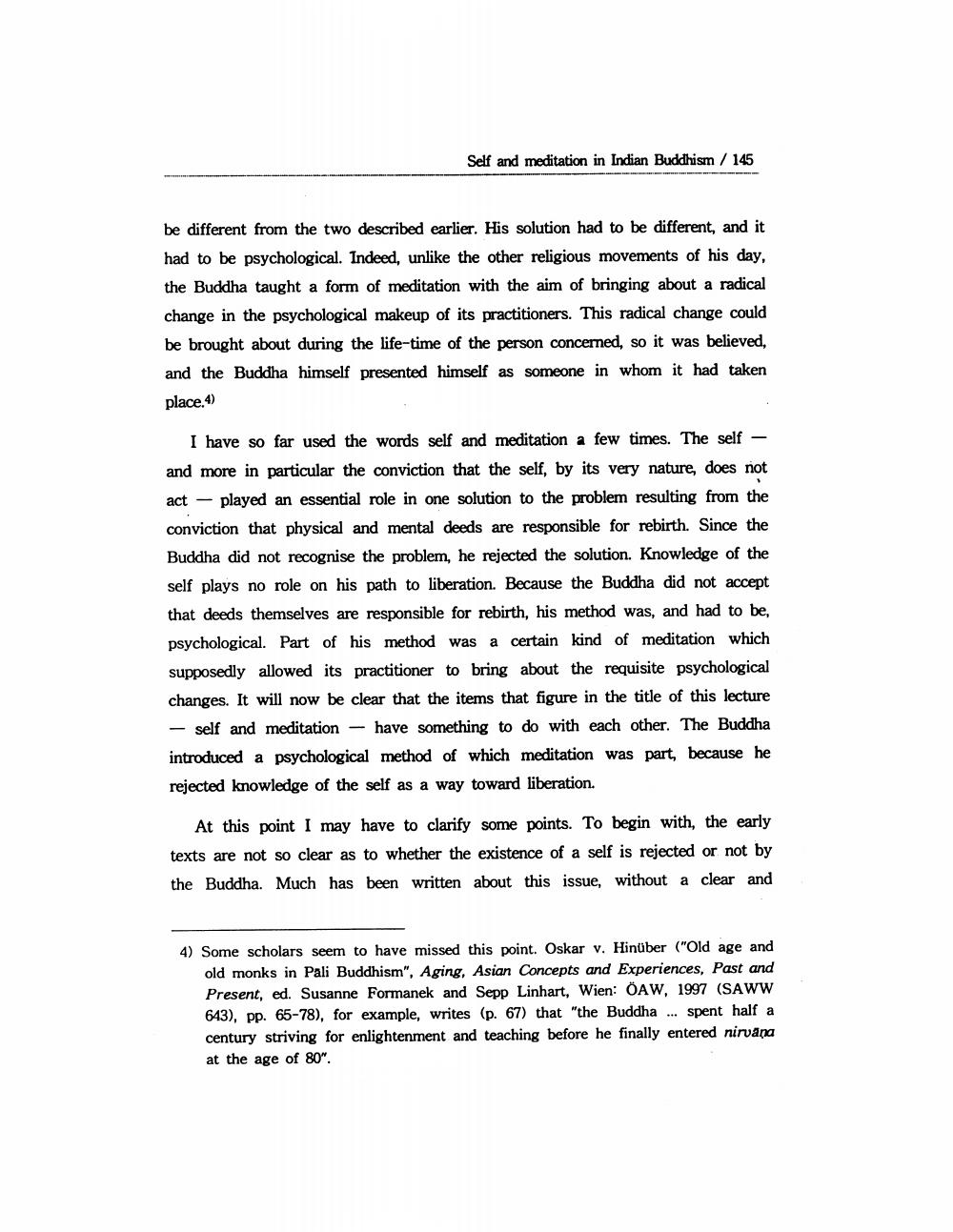Book Title: Self And Meditation In Indian Buddhism Author(s): Johannes Bronkhorst Publisher: Johannes Bronkhorst View full book textPage 5
________________ Self and meditation in Indian Buddhism / 145 be different from the two described earlier. His solution had to be different, and it had to be psychological. Indeed, unlike the other religious movements of his day, the Buddha taught a form of meditation with the aim of bringing about a radical change in the psychological makeup of its practitioners. This radical change could be brought about during the life-time of the person concerned, so it was believed, and the Buddha himself presented himself as someone in whom it had taken place.4) I have so far used the words self and meditation a few times. The self and more in particular the conviction that the self, by its very nature, does not act played an essential role in one solution to the problem resulting from the conviction that physical and mental deeds are responsible for rebirth. Since the Buddha did not recognise the problem, he rejected the solution. Knowledge of the self plays no role on his path to liberation. Because the Buddha did not accept that deeds themselves are responsible for rebirth, his method was, and had to be, psychological. Part of his method was a certain kind of meditation which supposedly allowed its practitioner to bring about the requisite psychological changes. It will now be clear that the items that figure in the title of this lecture -self and meditation have something to do with each other. The Buddha introduced a psychological method of which meditation was part, because he rejected knowledge of the self as a way toward liberation. - At this point I may have to clarify some points. To begin with, the early texts are not so clear as to whether the existence of a self is rejected or not by the Buddha. Much has been written about this issue, without a clear and 4) Some scholars seem to have missed this point. Oskar v. Hinüber ("Old age and old monks in Pali Buddhism", Aging, Asian Concepts and Experiences, Past and Present, ed. Susanne Formanek and Sepp Linhart, Wien: ÖAW, 1997 (SAWW 643), pp. 65-78), for example, writes (p. 67) that "the Buddha... spent half a century striving for enlightenment and teaching before he finally entered nirvana at the age of 80".Page Navigation
1 ... 3 4 5 6 7 8 9 10 11 12 13 14 15 16 17 18 19
